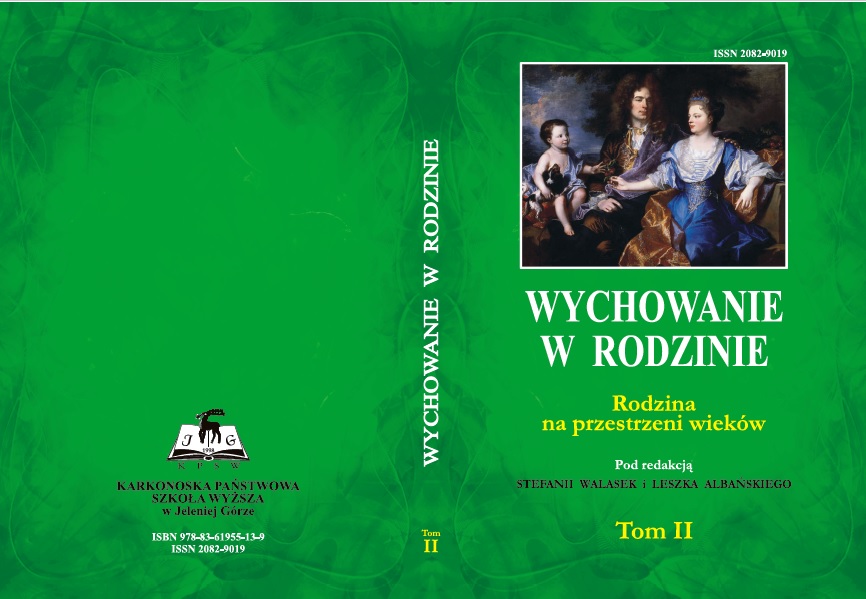Sierocińce zakonne w Drugiej Rzeczypospolitej. Z badań
nad dziejami opieki zastępczej (pozarodzinnej) w Polsce
Orphanages run by nuns in Druga Rzeczpospolita (The Second Republic of Poland – Poland between 1918-1939
). An outline of the history
of foster care (outside the family) in Poland.
Author(s): Edyta BartkowiakSubject(s): History, Social Sciences, Sociology, Family and social welfare
Published by: Zakład Historii Edukacji w Instytucie Pedagogiki Uniwersytetu Wrocławskiego
Keywords: orphanhood; foster care; institutional care; institutional foster care; hospital; orphanage; institutions run by nuns; care/educational work
Summary/Abstract: Child foster care organized by nuns and meant for children deprived of in family upbringing dates back as far as the 13 century. The prototypes of orphanages run by nuns were medieval hospitals, that is care institutions for all those in need.The beginnings of care/educational work with orphaned and abandoned children are connected with the activity of The Holy Spirit de Saxia male congregation, whose members were called “duchaki” in Poland. Since the 16 century the members of the Sisters of Mercy and Sisters of Charity congregations have specialized in institutional foster care. In nationally sovereign Druga Rzeczpospolita orphanages run by nuns were numerous and they were characterized by relative financial stability, the continuity of educational processes and creativity in finding new solutions to be used in the work with the children who were cared for.
Journal: Wychowanie w Rodzinie
- Issue Year: II/2011
- Issue No: 2
- Page Range: 289-319
- Page Count: 31
- Language: English, Polish

